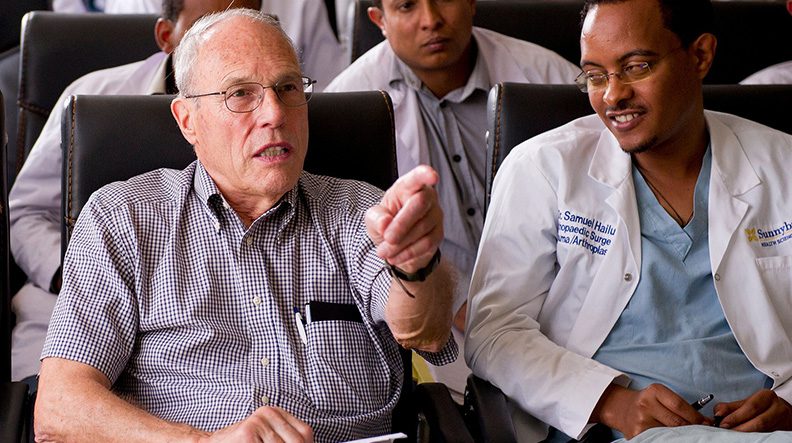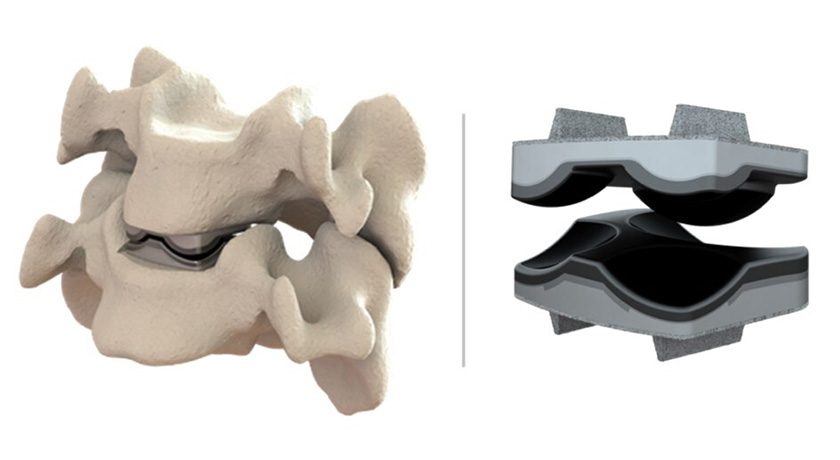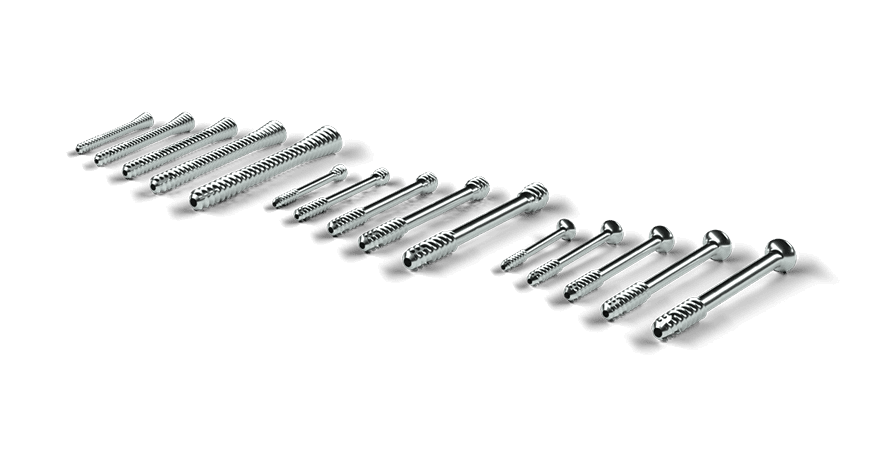

 Copy to clipboard
Copy to clipboard 
SIGN Fracture Care International is a humanitarian organization that donates education and implant systems to surgeons in developing countries and low-resource hospitals. It’s the passion project of Lewis Zirkle, M.D., SIGN’s President, Founder and Chairman, that has evolved into a worldwide network of 452 hospitals in 60 countries. SIGN has cared for 460,000 patients since its founding in 1999.
This May, ORTHOWORLD is donating 10% of OMTEC registration fees (up to $10,000) to SIGN. When you register during OMTEC IMPACT Month, you’re doing more than securing your place at the industry’s premier event — you’re helping transform lives.
To learn more about how SIGN brings life-changing orthopedic care to patients, we spoke with Dr. Zirkle and Terry Smith, SIGN’s Engineering Manager. They discussed the organization’s mission, the inspiration and fulfillment they experience through the program and ways that orthopedic companies can contribute to their philanthropic efforts.
Dr. Zirkle, you were an orthopedic surgeon in the U.S. Army during the Vietnam War. How did that experience lead to the launch of SIGN?
Dr. Zirkle: It was truly life-changing for me, and it marked the beginning of SIGN. I worked alongside North Vietnamese nuns to care for injured children and when I came back from the war, I realized that many poor people around the world weren’t receiving the care they needed — and I wanted to help change that.
Smith: Beginning 26 years ago, Dr. Zirkle and Jeanne Dillner, our CEO, traveled extensively to visit hospitals in need and train surgeons on the use of our implant system. Today, we have dozens of mentor surgeons around the world who conduct the bulk of our training within the SIGN network of hospitals.
What clinical challenges must be overcome to provide care in under-resourced parts of the world?
Smith: Many of the hospitals we work with don’t have access to consistent power, so all our equipment can be operated by hand. The unique design of our intramedullary nail system allows surgeons to use it in hospitals without imaging capabilities.
We’ve heard so many stories — some inspiring, some heartbreaking — of surgeons performing procedures with only headlamps for light, or patients having to bring their own fuel to run generators that power operating rooms for their surgeries. The success of SIGN requires understanding the constraints of the hospitals we work with and developing solutions that meet their needs.
We work with hospitals that don’t have surgical drills that can be sterilized for surgery. In some cases, surgeons are forced to use construction drills for surgery. We look at that and think, how is that drill sterilized? That’s why we designed a cover that the drill goes into so that it can be cleaned and sterilized multiple times, and we have stainless steel drill chucks that can be used on the outside of the bag. This gives the surgeon a sterile barrier to use with the common construction drill. We try to find those areas where the surgeon faces a need, and we can fill the niche.
How has fracture care evolved over the years?
Dr. Zirkle: We now have instruments that are applicable to more surgeries. The drill cover is a big deal because it helps prevent infections. Our reamers are used to make the canal hole bigger and to give our implants a tight fit. The reamers also give us the opportunity to use a fin nail to provide the fracture with good stability.
I remember operating on a patient in Bangladesh, and needing to finish the case in time to catch a flight. The reamer got hung up in the bone canal. I realized that wasn’t good, and we started to work on designing a fin nail. We’re studying the results of using a fin nail vs. a standard nail, and we’ve found that the fin nail matches the stability of the standard nail.
Smith: When SIGN was started, the goal was to treat tibia fractures. Through Dr. Zirkle’s experience getting the reamer stuck in the bone canal, we learned that there’s another nail configuration that can be used. The fin nail can be used on the left or right side of the body, in the tibia or femur, up through the knee or down through the hip, or in the humerus. Most medical device companies have a unique nail for each one of those approaches, where we have a given nail that, as long as it’s the right size, can be used in those three bones. It’s universal, and it helps minimize the supplies needed for a case and keep inventory costs down.

SIGN Fracture Care gives the injured poor access to fracture surgery by donating orthopedic education and implant systems to surgeons in low- and middle-income countries.
After each SIGN Surgery, surgeons upload case information into the program’s database, which is the largest collection of data about long bone fractures in the world. What do you do with that information?
Dr. Zirkle: We start by carefully reading and correlating the data, a process that helps us identify what requires additional investigation. Every reported case is analyzed so we can determine what went right, what could be improved and how we can integrate that feedback into the designs of our implants and instruments.
Smith: Dr. Zirkle has personally reviewed and provided feedback on 95% of the 250,000 cases in our surgical database. That allows us to adjust our implant designs and surgeon training approach.
From an engineering and product development perspective, it’s incredibly rewarding. We have direct access to surgeons and hear their challenges straight from the source, which gives us an abundance of voice-of-the-customer input.
You must have encountered countless inspiring stories, but is there one that stands out?
Smith: One of the most powerful began in Ethiopia in the early 2000s when Dr. Zirkle visited Black Lion Hospital, a major teaching institution. Around the same time, Dr. Duane Anderson, an American surgeon, launched an orthopedic residency program at Soddo Christian Hospital. Eventually, Dr. Zirkle worked with Dr. Anderson to create a national orthopedic training system. Today, Ethiopia has a burgeoning program with multiple trauma fellowships and SIGN supports 49 hospitals across the country. Dr. Anderson and Dr. Zirkle were honored at last year’s Ethiopian Trauma Conference as founders of orthopedic surgery in the country. It’s emotional to think about the incredible impact SIGN has had.
How can the orthopedic industry contribute to your cause?
Smith: We’re fortunate to have support from many companies in various ways, including supply chain collaboration, discounts on raw materials and co-marketing efforts. We’re also incredibly thankful for the opportunity to be part of OMTEC and to share SIGN’s mission and work with attendees. It’s a chance for people to learn more about our work and explore how their unique talents or resources might contribute to advancing our mission.
SIGN Fracture Care International is a humanitarian organization that donates education and implant systems to surgeons in developing countries and low-resource hospitals. It’s the passion project of Lewis Zirkle, M.D., SIGN’s President, Founder and Chairman, that has evolved into a worldwide network of 452 hospitals in 60 countries. SIGN has...
SIGN Fracture Care International is a humanitarian organization that donates education and implant systems to surgeons in developing countries and low-resource hospitals. It’s the passion project of Lewis Zirkle, M.D., SIGN’s President, Founder and Chairman, that has evolved into a worldwide network of 452 hospitals in 60 countries. SIGN has cared for 460,000 patients since its founding in 1999.
This May, ORTHOWORLD is donating 10% of OMTEC registration fees (up to $10,000) to SIGN. When you register during OMTEC IMPACT Month, you’re doing more than securing your place at the industry’s premier event — you’re helping transform lives.
To learn more about how SIGN brings life-changing orthopedic care to patients, we spoke with Dr. Zirkle and Terry Smith, SIGN’s Engineering Manager. They discussed the organization’s mission, the inspiration and fulfillment they experience through the program and ways that orthopedic companies can contribute to their philanthropic efforts.
Dr. Zirkle, you were an orthopedic surgeon in the U.S. Army during the Vietnam War. How did that experience lead to the launch of SIGN?
Dr. Zirkle: It was truly life-changing for me, and it marked the beginning of SIGN. I worked alongside North Vietnamese nuns to care for injured children and when I came back from the war, I realized that many poor people around the world weren’t receiving the care they needed — and I wanted to help change that.
Smith: Beginning 26 years ago, Dr. Zirkle and Jeanne Dillner, our CEO, traveled extensively to visit hospitals in need and train surgeons on the use of our implant system. Today, we have dozens of mentor surgeons around the world who conduct the bulk of our training within the SIGN network of hospitals.
What clinical challenges must be overcome to provide care in under-resourced parts of the world?
Smith: Many of the hospitals we work with don’t have access to consistent power, so all our equipment can be operated by hand. The unique design of our intramedullary nail system allows surgeons to use it in hospitals without imaging capabilities.
We’ve heard so many stories — some inspiring, some heartbreaking — of surgeons performing procedures with only headlamps for light, or patients having to bring their own fuel to run generators that power operating rooms for their surgeries. The success of SIGN requires understanding the constraints of the hospitals we work with and developing solutions that meet their needs.
We work with hospitals that don’t have surgical drills that can be sterilized for surgery. In some cases, surgeons are forced to use construction drills for surgery. We look at that and think, how is that drill sterilized? That’s why we designed a cover that the drill goes into so that it can be cleaned and sterilized multiple times, and we have stainless steel drill chucks that can be used on the outside of the bag. This gives the surgeon a sterile barrier to use with the common construction drill. We try to find those areas where the surgeon faces a need, and we can fill the niche.
How has fracture care evolved over the years?
Dr. Zirkle: We now have instruments that are applicable to more surgeries. The drill cover is a big deal because it helps prevent infections. Our reamers are used to make the canal hole bigger and to give our implants a tight fit. The reamers also give us the opportunity to use a fin nail to provide the fracture with good stability.
I remember operating on a patient in Bangladesh, and needing to finish the case in time to catch a flight. The reamer got hung up in the bone canal. I realized that wasn’t good, and we started to work on designing a fin nail. We’re studying the results of using a fin nail vs. a standard nail, and we’ve found that the fin nail matches the stability of the standard nail.
Smith: When SIGN was started, the goal was to treat tibia fractures. Through Dr. Zirkle’s experience getting the reamer stuck in the bone canal, we learned that there’s another nail configuration that can be used. The fin nail can be used on the left or right side of the body, in the tibia or femur, up through the knee or down through the hip, or in the humerus. Most medical device companies have a unique nail for each one of those approaches, where we have a given nail that, as long as it’s the right size, can be used in those three bones. It’s universal, and it helps minimize the supplies needed for a case and keep inventory costs down.

SIGN Fracture Care gives the injured poor access to fracture surgery by donating orthopedic education and implant systems to surgeons in low- and middle-income countries.
After each SIGN Surgery, surgeons upload case information into the program’s database, which is the largest collection of data about long bone fractures in the world. What do you do with that information?
Dr. Zirkle: We start by carefully reading and correlating the data, a process that helps us identify what requires additional investigation. Every reported case is analyzed so we can determine what went right, what could be improved and how we can integrate that feedback into the designs of our implants and instruments.
Smith: Dr. Zirkle has personally reviewed and provided feedback on 95% of the 250,000 cases in our surgical database. That allows us to adjust our implant designs and surgeon training approach.
From an engineering and product development perspective, it’s incredibly rewarding. We have direct access to surgeons and hear their challenges straight from the source, which gives us an abundance of voice-of-the-customer input.
You must have encountered countless inspiring stories, but is there one that stands out?
Smith: One of the most powerful began in Ethiopia in the early 2000s when Dr. Zirkle visited Black Lion Hospital, a major teaching institution. Around the same time, Dr. Duane Anderson, an American surgeon, launched an orthopedic residency program at Soddo Christian Hospital. Eventually, Dr. Zirkle worked with Dr. Anderson to create a national orthopedic training system. Today, Ethiopia has a burgeoning program with multiple trauma fellowships and SIGN supports 49 hospitals across the country. Dr. Anderson and Dr. Zirkle were honored at last year’s Ethiopian Trauma Conference as founders of orthopedic surgery in the country. It’s emotional to think about the incredible impact SIGN has had.
How can the orthopedic industry contribute to your cause?
Smith: We’re fortunate to have support from many companies in various ways, including supply chain collaboration, discounts on raw materials and co-marketing efforts. We’re also incredibly thankful for the opportunity to be part of OMTEC and to share SIGN’s mission and work with attendees. It’s a chance for people to learn more about our work and explore how their unique talents or resources might contribute to advancing our mission.

You’ve reached your limit.
We’re glad you’re finding value in our content — and we’d love for you to keep going.
Subscribe now for unlimited access to orthopedic business intelligence.
DC
Dan Cook is a senior editor with more than 18 years of experience in medical publishing and an extensive background in covering orthopedics and outpatient surgery. He joined ORTHOWORLD to develop content focused on important industry trends, top thought leaders and innovative technologies.






